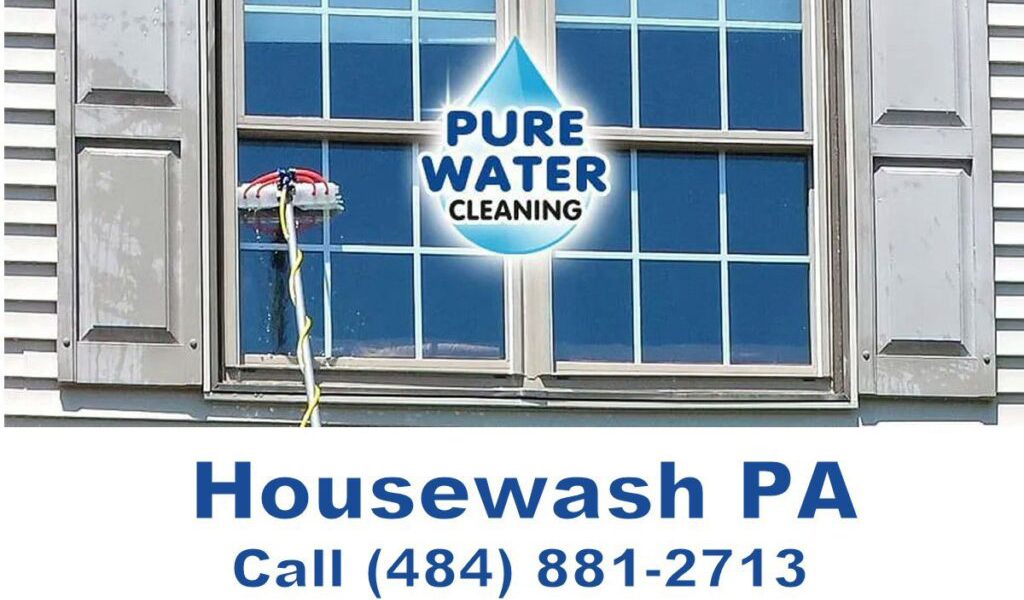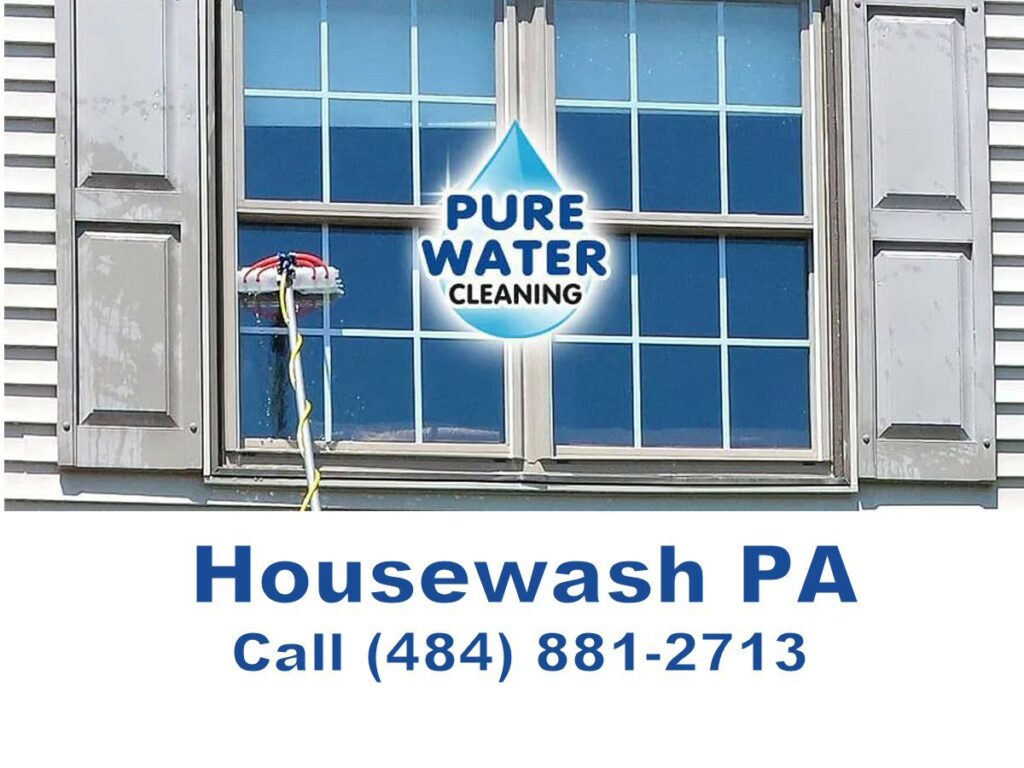
Power Wash Your Wood Decks and Fences: The Essential Guide
Master the Art of Pressure Washing: Transform Your Wood Decks and Fences
Pressure washing is not merely a cleaning method; it’s a transformative technique that can significantly enhance the appearance and longevity of outdoor surfaces, particularly wood decks and fences. When executed correctly, this powerful method can eliminate years of built-up dirt, grime, mold, and mildew, effectively restoring the original beauty of these materials. This comprehensive guide offers essential insights and actionable strategies that empower you to utilize pressure washing effectively, resulting in stunning outcomes that will elevate the visual appeal of your outdoor spaces and create an inviting environment for your family and guests.
Uncover the Science Behind Effective Pressure Washing for Superior Results
Pressure washing utilizes a specialized pressure washer with various nozzle attachments that deliver a focused stream of water. This intense jet can exert a force that is 30 to 80 times stronger than a standard garden hose, making it incredibly efficient at removing contaminants and rejuvenating surfaces to their original condition. Grasping the fundamental mechanics of this process is vital for anyone looking to improve their outdoor spaces while simultaneously preserving the overall value of their property. By understanding how pressure washing works, you can apply it more effectively and achieve the best possible results.
Understand the Importance of Regular Pressure Washing for Wood Decks and Vinyl Fences
 Over time, wood decking and vinyl fencing accumulate various unsightly deposits, including dirt, pollen, grime, mold, mildew, and even remnants from spilled food and drinks. These stubborn contaminants can seep into the minuscule pores of the materials, making them difficult to remove with conventional cleaning methods. By adopting pressure washing, you can effectively tackle these deeply embedded stains, revitalizing your exterior surfaces with minimal effort and significantly improving your property’s visual appeal and overall marketability.
Over time, wood decking and vinyl fencing accumulate various unsightly deposits, including dirt, pollen, grime, mold, mildew, and even remnants from spilled food and drinks. These stubborn contaminants can seep into the minuscule pores of the materials, making them difficult to remove with conventional cleaning methods. By adopting pressure washing, you can effectively tackle these deeply embedded stains, revitalizing your exterior surfaces with minimal effort and significantly improving your property’s visual appeal and overall marketability.
This powerful cleaning technique not only restores a fresh appearance to your exterior surfaces but also acts as a crucial maintenance strategy that extends the lifespan of both wood and vinyl materials. The high-pressure water spray penetrates surfaces, effortlessly lifting stubborn stains and preparing them for a new stain or sealer. This meticulous preparation ensures a long-lasting and visually appealing finish that can withstand the test of time, ultimately saving you money on repairs and replacements.
In addition to enhancing aesthetic appeal, regular pressure washing is vital for preventing rot and decay, ensuring your deck or fence remains in excellent condition for years to come. This proactive maintenance approach is essential for homeowners who wish to protect their investments while simultaneously boosting their property’s curb appeal and value.
Explore the Top Benefits of Pressure Washing Your Wood Decks and Fences
- Effectively eliminates surface dirt and debris such as pollen, leaves, and soil buildup, giving your outdoor areas a rejuvenated and inviting appearance.
- Removes mold and mildew that thrive in damp environments, thereby preserving the integrity and longevity of your materials.
- Cleans away food stains like grease, oil, and wine spills that detract from the overall beauty of your surfaces, restoring their original charm.
- Revitalizes faded colors that have been dulled by sun exposure, bringing vibrancy and life back to your outdoor settings.
- Prepares surfaces for a new protective coating, enhancing the overall durability and lifespan of your outdoor structures.
Essential Reasons to Prioritize Pressure Washing for Your Vinyl Fences
- Effectively eliminates chalky oxidation and UV damage that can compromise the visual appeal of your fence, ensuring it looks its best.
- Cleans away exhaust fumes, rust stains, and dirt buildup that accumulate over time, maintaining a pristine appearance.
- Eliminates mildew deposits that can cause discoloration and degradation of materials, safeguarding your investment.
- Restores bright colors hidden beneath layers of dirt and grime, significantly enhancing visual appeal and inviting admiration.
- Transforms the vinyl fence, making it look as good as new and greatly improving your outdoor environment and overall property value.
Plan Thoroughly Before Pressure Washing Your Wood Decks and Fences
To ensure effective and safe cleaning with a pressure washer, thorough preparation is absolutely essential. Depending on the material composition of your exterior structure and the level of soiling, it’s crucial to follow these foundational preliminary steps to ensure optimal results:
Identifying the Material of Your Deck
Before beginning the cleaning process, it’s imperative to identify the material composition of your deck or fence, as different materials necessitate specific cleaning techniques. Common materials include:
- Wood: such as teak, cedar, pine, redwood, and composite options that each have unique cleaning requirements.
- PVC vinyl, known for its durability and low maintenance characteristics, making it a popular choice for outdoor fencing.
- Concrete, commonly utilized for patios and walkways, requiring different pressure levels compared to wood.
- Brick, a classic option for fences and walls that may need specialized cleaning methods.
While both wood and vinyl can typically withstand pressure washing, extra caution is needed with softer woods, which require lower pressure settings to avoid damage. Additionally, masonry surfaces may necessitate the use of chemical cleaners to prevent potential harm, so understanding your materials is key to a successful cleaning effort.
Conducting a Thorough Inspection for Pre-Existing Damage
A detailed inspection of your deck or fence is crucial for identifying any pre-existing damage, such as cracked boards, warped sections, chipped materials, or loose nails and screws. Addressing these minor issues before pressure washing will yield the best results and prevent complications that could arise during the cleaning process, ensuring a smooth and effective operation.
Clearing Surface Debris Before Power Washing
Before you begin pressure washing, it is vital to clear all items from the deck, including furniture, flower pots, rugs, and toys. For fences, ensure that any vegetation or objects leaning against the structure are also removed. This guarantees a thorough and methodical cleaning process without obstacles, leading to optimal results and a cleaner outdoor area.
Protecting Surrounding Areas During Your Pressure Washing Project
It is essential to safeguard surrounding areas from the pressure washer spray by using tarps and tarpaulins secured with weights. This strategy prevents unintended damage from water spray and debris. Additionally, cover nearby exterior walls and windows if you are working close to the house. Utilizing plastic tarps can help contain water mist, especially over larger areas, ensuring cleanliness and protection for all surfaces involved.
Essential Tools and Equipment for Effective Pressure Washing
Equipping yourself with the right tools and equipment simplifies the cleaning process significantly. Make sure to have the following items on hand:
- Pressure washer: select either gas or electric models based on your specific cleaning needs and preferences.
- Nozzles: choose different spray nozzles for various tasks to achieve optimal results for each cleaning situation.
- Extensions: for accessing hard-to-reach areas requiring cleaning.
- Cleaner: use a pressure washer concentrate specifically formulated for patios or fences to maximize effectiveness.
- Broom: for pre-cleaning surfaces and removing loose debris before pressure washing.
- Garden hose: for rinsing to ensure thorough cleaning and debris removal.
- Scrub brush: for spot cleaning any remaining stains or stubborn marks that require extra attention.
- Protective equipment: including safety goggles and gloves to protect against potential hazards during the cleaning process.
Selecting the Ideal Pressure Washer to Meet Your Cleaning Demands
When researching pressure washers, you’ll encounter both electric and gas models available on the market. Your choice of which type to utilize for cleaning your yard and fences will depend on several factors, including the scope of the job and the necessary power level to achieve desired results.
Evaluating Gas vs. Electric Pressure Washers: Key Differences Explained
Gas-powered pressure washers are acclaimed for their ability to generate higher water pressure thanks to their robust engines. They are especially suited for larger cleaning tasks due to their strength and efficiency. However, they may be noisier and emit exhaust fumes, which could be a concern for some users. Additionally, the weight of the engine and fuel can make gas models less portable than their electric counterparts, necessitating careful consideration based on your cleaning needs.
Electric pressure washers, on the other hand, plug into standard electrical outlets and feature smaller motors that produce lower pressure, making them ideal for medium-intensity cleaning tasks such as fences or patios. Electric models are generally quieter and more environmentally friendly, as they do not produce exhaust gases. They are also easier to transport, provided your circuit amperage can effectively support them without overloading.
| Gas Pressure Washer | Electric Pressure Washer | |
|---|---|---|
| Power | More powerful | Less powerful |
| Noise Level | Noisier | Quieter |
| Portability | Heavier appliances | Lighter appliances |
| Emit Exhaust Gases | Emits exhaust gases | Does not emit exhaust gases |
Understanding PSI and GPM: Optimal Requirements for Effective Yard and Fence Cleaning
Pressure is measured in PSI (pounds per square inch), indicating the intensity of the water pressure generated by the pressure washer. Higher PSI ratings correlate to greater cleaning power, making it essential to select the right machine for your needs. Most pressure washers operate in the range of 1300 to 1800 PSI, while gas models can achieve pressures between 2000 and 4000 PSI, making them suitable for more demanding cleaning tasks.
GPM (gallons per minute) represents the volume of water flow; therefore, a higher GPM allows for larger areas to be cleaned more efficiently. A typical garden hose operates at around 40 PSI. For decks, pressure washers generally function at 1300 to 3000 PSI, while fences typically require between 500 and 2000 PSI. Exceeding the recommended pressure may cause damage, such as chipping wood or shredding vinyl, making it essential to adhere to established guidelines for safe and effective cleaning.
Here are suggested guidelines for cleaning various surfaces, ensuring you select the appropriate settings:
| Surface | Pressure (PSI) | Volume (GPM) |
|---|---|---|
| Wood Decks | 1800 – 3000 | 2.5+ GPM |
| Vinyl Fencing | 1200 – 2000 | 1.2+ GPM |
| Concrete | 2500 – 4000+ | 3-4+ GPM |
Selecting the Right Nozzle for Your Pressure Washing Tasks
Pressure washers come equipped with quick-connect nozzles that offer various water jet patterns tailored for specific applications. Choosing the correct nozzle is crucial for maximizing cleaning efficiency while minimizing the risk of damaging surfaces during the process. Each nozzle type serves different purposes and understanding their uses can greatly enhance your cleaning experience.
| Nozzle Type | Water Jet | Cleaning Tasks |
|---|---|---|
| 0.5″ Pencil Tip | Narrow jet | Paint or stain removal, stubborn soiling |
| 15″ | Fan jet | General cleaning of large surfaces |
| 25″ | Wide fan jet | Cleaning of delicate surfaces such as wood decks |
| 40″ | Flood blasting | Application of cleaning or rinsing solutions |
Additionally, rotating nozzles provide a broad spray area in a concentrated zero-degree stream while rotating continuously, allowing for efficient cleaning of larger areas in less time. Many pressure washers also feature specialized soap nozzles, making it beneficial to have a variety of nozzles available to enhance your cleaning tasks and improve overall effectiveness.
Comprehensive Step-by-Step Instructions for Safe and Effective Pressure Washing of Wood Decks
Once you have gathered all necessary cleaning supplies and equipment, it’s time to meticulously prepare your work area to ensure a smooth and efficient process:
- Work in manageable sections
- Resist the temptation to wash the entire yard or long segments of fence in one go. Instead, break the area into smaller, more manageable sections for thorough cleaning from top to bottom. This method minimizes drying time and helps prevent potential mold and mildew growth, ensuring that no dirt or cleaning products are left behind on the surfaces.
- Start with a low-pressure pre-wash
- Before applying any detergents, rinse the entire surface with clean water to dampen the material and effectively loosen dirt. Utilize a wide fan nozzle set at approximately 40 degrees and a low spray pressure of 1100 PSI to initiate this critical process and prepare surfaces for deeper cleaning.
- Methodical Washing
- Make consistent up-and-down passes over each section using an appropriate nozzle angle while gradually increasing the pressure to between 1000 and 2500 PSI, depending on the surface type and degree of soiling. Overlap each strip by a few inches to ensure uniform coverage, and be sure to switch nozzles as necessary to accommodate varying cleaning requirements.
- Maintain the correct distance
- For optimal cleaning results, it’s crucial to maintain the proper distance between the nozzle and the surface. Generally, a distance of 6 to 12 inches (15 to 30 cm) provides the best performance. If you notice any damage during the process, increase the distance accordingly to prevent further complications.
- Allow to dry between passes
- After rinsing, allow surfaces to air dry for approximately 15 to 20 minutes before addressing the next area. This step is vital to prevent moisture from becoming trapped beneath the surface, which can lead to warping or discoloration. Proper drying also helps deter mold and mildew growth effectively.
- Applying protective coatings
- Once your deck or fence appears clean following the final rinse, allow it to dry completely for 24 to 48 hours before applying a protective sealer or stain. This waiting period ensures that any residual moisture evaporates completely, promoting better adhesion of the coating for long-lasting results.
Adopt Essential Safety Precautions While Pressure Washing Wood Decks
While pressure washers are recognized as incredibly effective cleaning tools, they also pose certain risks, including exposure to pressurized water, electrical hazards in damp environments, and potential chemical exposure. Adhering to these safety precautions will help ensure a safe and efficient cleaning experience for you and anyone nearby:
Always Wear Appropriate Protective Gear
At the very least, it’s crucial to wear ANSI-approved safety glasses and rubber gloves during the pressure washing process. Consider wearing waterproof boots and clothing for additional protection against standing water. Additionally, using face masks can help limit inhalation of atomized cleaning solutions and water droplets that may be present during the cleaning operation, ensuring your safety throughout the process.
Ensure Safe Footing While Pressure Washing
Utilize ramps or ladders to safely clean elevated areas such as fences. Always choose a dry, flat surface that offers good traction, and mark smooth areas with high-visibility tape. Take regular breaks, as the repetitive motions required for power washing can lead to fatigue, potentially compromising safety and increasing the risk of accidents.
Proper Handling of Power Cords
Use grounded extension cords specifically designed for outdoor use to minimize tripping hazards and reduce the risk of short circuits. Keep all cords away from standing water and periodically inspect them for signs of damage to ensure safe operation throughout the cleaning process. Proper cord management reduces accidents and keeps your working area safe.
Exercise Caution on Elevated Surfaces
Avoid leaning too far over railings when cleaning from elevated terraces or balconies. Move cautiously and maintain a secure footing at all times. For multi-story cleaning tasks, it may be wise to hire a professional to ensure safety and effective results without risking injury to yourself or damage to your property.
Follow Chemical Safety Guidelines for Pressure Washing
Store cleaning chemicals securely out of reach of pets and children. Always read product labels thoroughly and dilute concentrates according to the instructions before use. Rinse surfaces thoroughly after washing to eliminate any soap residue, which can potentially harm plants and pets, safeguarding your outdoor environment after cleaning.
Implement Post-Cleaning Maintenance Steps for Your Wood Decks
Successfully completing your pressure washing project will leave your outdoor surfaces clean and visually appealing. To maintain the results achieved, follow these essential steps to ensure longevity and beauty:
- Application of Wood Deck Sealer
- Apply two thin, even coats of a high-quality penetrating sealer to the entire deck surface. This treatment conditions the wood and provides waterproof protection against future weathering and wear. Popular options include stains, paints, or natural clear oils. Always conduct a compatibility test with wood debris before full application to ensure optimal adhesion and performance for long-lasting results.
- Final Appearance Check and Touch-Ups
- Inspect for any remaining stains and address them manually, sanding or making light repairs as necessary. For fences, ensure that bent vinyl slats are straightened and any loose pieces are secured to maintain optimal appearance and structural integrity,











Your insights on pressure washing as a transformative technique made me reflect on how often we overlook the maintenance of our outdoor spaces. I have a wood deck that has been neglected for years, and it’s fascinating to think about how pressure washing could restore it both functionally and aesthetically.
It’s interesting to hear you reflect on the often-overlooked maintenance of outdoor spaces. A wood deck can really transform a backyard or front porch area, but it’s so easy to let it slip down the list of home priorities, especially when life gets busy. Pressure washing can definitely breathe new life into that wood, making it look almost brand new and allowing for a more inviting space.